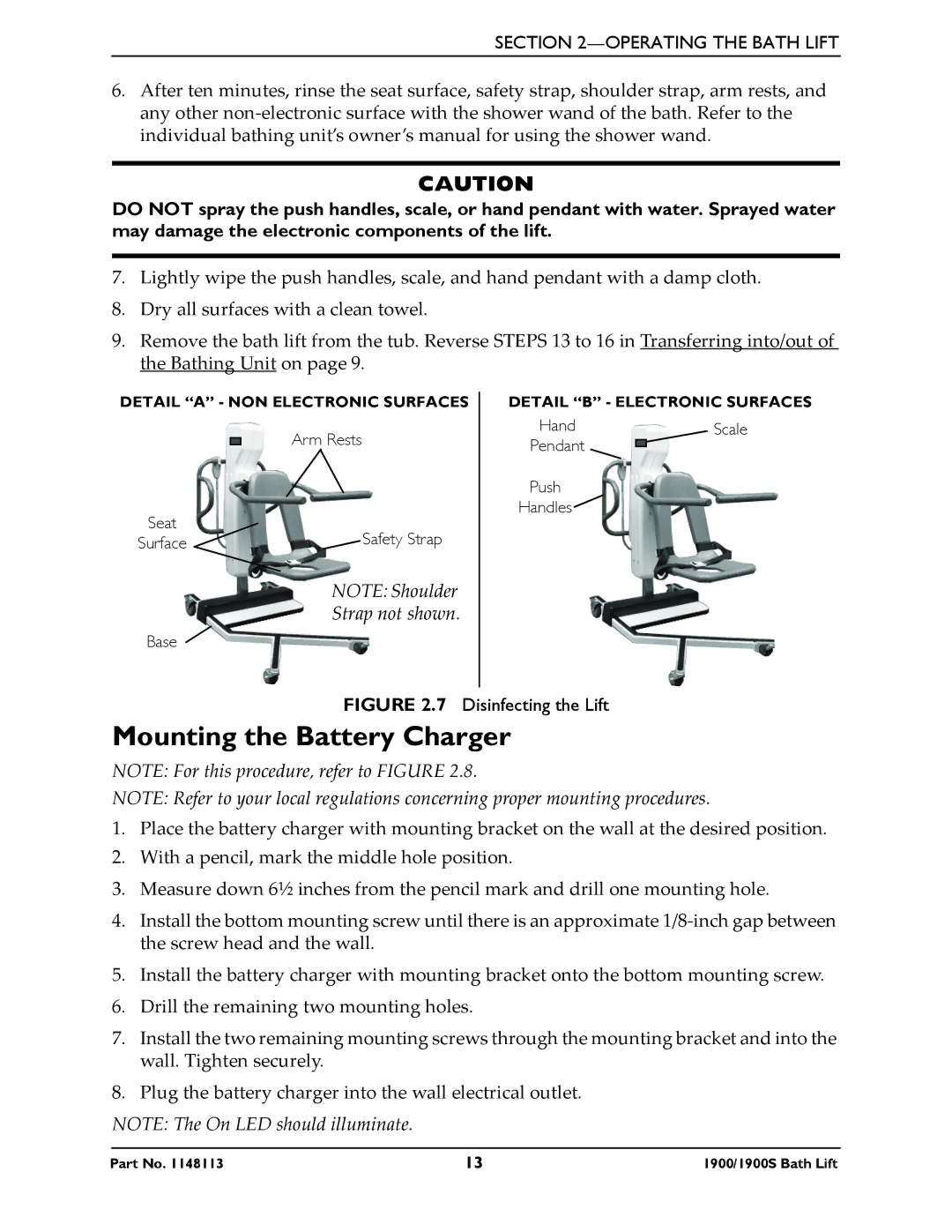1900S, 1900 specifications
Invacare is a leading manufacturer of medical equipment and aids for daily living, with the Invacare 1900 and 1900S being two notable models in their lineup of patient lifting solutions. Designed for efficiency and comfort, these models cater to the needs of both healthcare providers and patients.One of the standout features of the Invacare 1900 series is its exceptional lifting capacity. With a solid construction, the 1900 model can support weights of up to 400 pounds, making it suitable for a wide range of individuals. The 1900S variant enhances this functionality with an innovative spreader bar, allowing for versatile positioning and improved comfort during lifts.
The 1900 series incorporates advanced technologies to facilitate safe and efficient patient transfers. The hydraulic lift system is operated manually via a foot pedal, enabling caregivers to operate the lifter without straining their back or arms. This design promotes ergonomic practices, reducing the risk of injury for caregivers while ensuring patients feel secure during the lift.
Another key characteristic of the Invacare 1900 and 1900S is their maneuverability. They are equipped with swivel casters that provide smooth movement in tight spaces, allowing caregivers to navigate through doorways and around furniture easily. The base of the lift is adjustable, offering the flexibility to accommodate various situations, whether lifting from a bed, wheelchair, or floor.
Both models feature a simple yet robust control mechanism that allows caregivers to operate the lift system effortlessly. The lifting arm can be adjusted to accommodate different patient heights, ensuring a customized and comfortable fit for each individual. Safety is paramount, and the Invacare 1900 series is designed with stability in mind, ensuring peace of mind during use.
Additionally, the durability of the materials used in the construction of the Invacare 1900 and 1900S ensures long-term reliability. These lifts are built to withstand the rigors of daily use in both home and healthcare settings, making them a wise investment.
In summary, the Invacare 1900 and 1900S patient lifts embody the perfect blend of functionality, safety, and ease of use. With their impressive lifting capabilities, advanced ergonomic design, and user-friendly features, they stand out as essential tools in the care of individuals with mobility challenges. These models not only improve the quality of life for patients but also support caregivers in providing safer, more efficient care.

